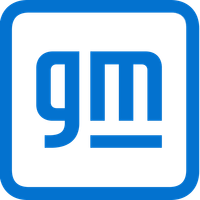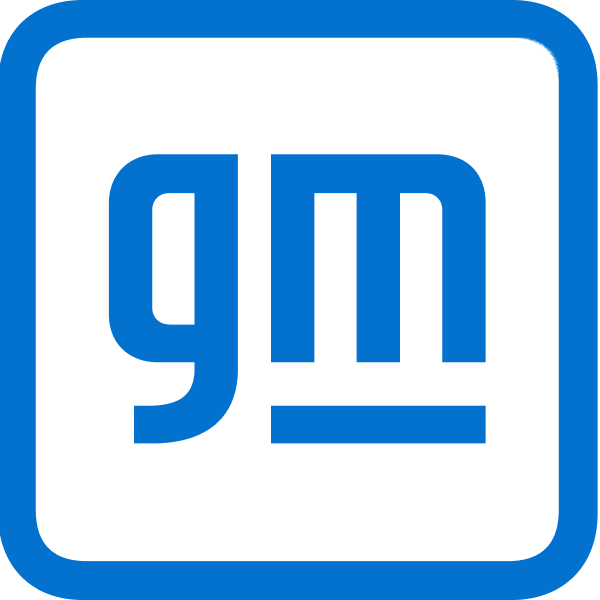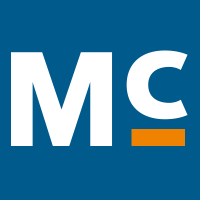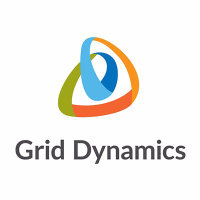
General Motors Co
NYSE:GM


| US |

|
Johnson & Johnson
NYSE:JNJ
|
Pharmaceuticals
|
| US |

|
Berkshire Hathaway Inc
NYSE:BRK.A
|
Financial Services
|
| US |

|
Bank of America Corp
NYSE:BAC
|
Banking
|
| US |

|
Mastercard Inc
NYSE:MA
|
Technology
|
| US |

|
UnitedHealth Group Inc
NYSE:UNH
|
Health Care
|
| US |

|
Exxon Mobil Corp
NYSE:XOM
|
Energy
|
| US |

|
Pfizer Inc
NYSE:PFE
|
Pharmaceuticals
|
| US |

|
Palantir Technologies Inc
NYSE:PLTR
|
Technology
|
| US |

|
Nike Inc
NYSE:NKE
|
Textiles, Apparel & Luxury Goods
|
| US |

|
Visa Inc
NYSE:V
|
Technology
|
| CN |

|
Alibaba Group Holding Ltd
NYSE:BABA
|
Retail
|
| US |

|
JPMorgan Chase & Co
NYSE:JPM
|
Banking
|
| US |

|
Coca-Cola Co
NYSE:KO
|
Beverages
|
| US |

|
Walmart Inc
NYSE:WMT
|
Retail
|
| US |

|
Verizon Communications Inc
NYSE:VZ
|
Telecommunication
|
| US |

|
Chevron Corp
NYSE:CVX
|
Energy
|
Utilize notes to systematically review your investment decisions. By reflecting on past outcomes, you can discern effective strategies and identify those that underperformed. This continuous feedback loop enables you to adapt and refine your approach, optimizing for future success.
Each note serves as a learning point, offering insights into your decision-making processes. Over time, you'll accumulate a personalized database of knowledge, enhancing your ability to make informed decisions quickly and effectively.
With a comprehensive record of your investment history at your fingertips, you can compare current opportunities against past experiences. This not only bolsters your confidence but also ensures that each decision is grounded in a well-documented rationale.
Do you really want to delete this note?
This action cannot be undone.

| 52 Week Range |
42.48
76.05
|
| Price Target |
|
We'll email you a reminder when the closing price reaches USD.
Choose the stock you wish to monitor with a price alert.

|
Johnson & Johnson
NYSE:JNJ
|
US |

|
Berkshire Hathaway Inc
NYSE:BRK.A
|
US |

|
Bank of America Corp
NYSE:BAC
|
US |

|
Mastercard Inc
NYSE:MA
|
US |

|
UnitedHealth Group Inc
NYSE:UNH
|
US |

|
Exxon Mobil Corp
NYSE:XOM
|
US |

|
Pfizer Inc
NYSE:PFE
|
US |

|
Palantir Technologies Inc
NYSE:PLTR
|
US |

|
Nike Inc
NYSE:NKE
|
US |

|
Visa Inc
NYSE:V
|
US |

|
Alibaba Group Holding Ltd
NYSE:BABA
|
CN |

|
JPMorgan Chase & Co
NYSE:JPM
|
US |

|
Coca-Cola Co
NYSE:KO
|
US |

|
Walmart Inc
NYSE:WMT
|
US |

|
Verizon Communications Inc
NYSE:VZ
|
US |

|
Chevron Corp
NYSE:CVX
|
US |
This alert will be permanently deleted.
General Motors Co
General Motors Co. (GM) traces its roots back to 1908 when it emerged as a small automaker in Flint, Michigan. Over the decades, GM has grown into one of the world's largest automobile manufacturers, boasting a diverse lineup of brands including Chevrolet, Cadillac, GMC, and Buick. The company operates on a global scale, with manufacturing facilities spread across 35 countries, allowing it to cater to regional markets by adapting its vehicles to local tastes and regulations. GM has demonstrated a robust capacity for innovation, evidenced by its aggressive strides toward electric vehicle (EV) production and autonomous driving technology. By tapping into the growing demand for eco-friendly and smart vehicles, General Motors is positioning itself as a leader in the automotive industry's transformation.
In its quest for profitability, GM relies on a multifaceted business model. The company's primary revenue stream comes from its core operations of designing, manufacturing, and selling vehicles and vehicle parts. Additionally, GM Financial, the automaker's captive finance arm, plays a crucial role by providing auto financing solutions that facilitate sales and enhance customer loyalty. With a keen eye on the future, the company is steadily venturing beyond the conventional car business, investing in autonomous vehicle divisions and exploring new avenues in ride-sharing and mobility services. Through strategic operations and ongoing adaptation to market trends, GM not only sustains its historical legacy but also charts a progressive path forward in the rapidly changing automotive landscape.

General Motors Co. (GM) traces its roots back to 1908 when it emerged as a small automaker in Flint, Michigan. Over the decades, GM has grown into one of the world's largest automobile manufacturers, boasting a diverse lineup of brands including Chevrolet, Cadillac, GMC, and Buick. The company operates on a global scale, with manufacturing facilities spread across 35 countries, allowing it to cater to regional markets by adapting its vehicles to local tastes and regulations. GM has demonstrated a robust capacity for innovation, evidenced by its aggressive strides toward electric vehicle (EV) production and autonomous driving technology. By tapping into the growing demand for eco-friendly and smart vehicles, General Motors is positioning itself as a leader in the automotive industry's transformation.
In its quest for profitability, GM relies on a multifaceted business model. The company's primary revenue stream comes from its core operations of designing, manufacturing, and selling vehicles and vehicle parts. Additionally, GM Financial, the automaker's captive finance arm, plays a crucial role by providing auto financing solutions that facilitate sales and enhance customer loyalty. With a keen eye on the future, the company is steadily venturing beyond the conventional car business, investing in autonomous vehicle divisions and exploring new avenues in ride-sharing and mobility services. Through strategic operations and ongoing adaptation to market trends, GM not only sustains its historical legacy but also charts a progressive path forward in the rapidly changing automotive landscape.
Raised Guidance: GM increased its full-year 2025 guidance for EBIT, EPS, and free cash flow, reflecting strong business performance and recent U.S. tariff policy changes.
Margin Target: Management reaffirmed commitment to restoring North America EBIT margins to the historical 8%–10% range, with Q3 margins at 6.2% (or around 9% excluding tariffs).
EV Strategy Reset: GM is slowing near-term EV expansion due to lower-than-anticipated demand and regulatory changes, shifting capacity back to ICE vehicles and taking $1.6 billion in related charges.
Cost Discipline: The company highlighted aggressive cost controls, manufacturing footprint adjustments, and ongoing capital discipline, with capex expected at the low end of guidance.
Software & Services Growth: Revenue from OnStar, Super Cruise, and other software services grew strongly, now nearing $2 billion year-to-date with 70% gross margins.
Tariff Mitigation: Expanded U.S. tariff offsets are reducing GM's 2025 tariff burden, and further cost and sourcing actions are expected to help in 2026.
Robust Cash Flow & Buybacks: Free cash flow remained strong and GM reduced its share count by 15% year-over-year via buybacks.
China Profitable Again: GM's restructured China business returned to profitability with growing market share and equity income.
Management
Mary T. Barra is the Chair and Chief Executive Officer of General Motors Company. She made history as the first female CEO of a major global automaker when she assumed the role in January 2014. Barra has been with General Motors for her entire career, starting as a co-op student in 1980 while she was still in college. She earned a Bachelor of Science degree in Electrical Engineering from General Motors Institute (now Kettering University) and later an MBA from the Stanford Graduate School of Business. Throughout her career at General Motors, Barra has held various engineering and administrative positions, including positions such as Executive Vice President of Global Product Development, Purchasing and Supply Chain, and Senior Vice President of Global Product Development. She played an influential role in reshaping GM's product development process and is known for her focus on innovation, sustainability, and transforming the company to focus on electric vehicles and autonomous vehicles. Under her leadership, General Motors became more focused on sustainability and technological advancement, with significant investments in electric vehicle infrastructure and self-driving technology. Barra has been consistently recognized as one of the world's most powerful women in business, noted for her leadership and vision in the evolving automotive industry.
Throughout her career at General Motors, Barra has held various engineering and administrative positions, including positions such as Executive Vice President of Global Product Development, Purchasing and Supply Chain, and Senior Vice President of Global Product Development. She played an influential role in reshaping GM's product development process and is known for her focus on innovation, sustainability, and transforming the company to focus on electric vehicles and autonomous vehicles.
Under her leadership, General Motors became more focused on sustainability and technological advancement, with significant investments in electric vehicle infrastructure and self-driving technology. Barra has been consistently recognized as one of the world's most powerful women in business, noted for her leadership and vision in the evolving automotive industry.
Mark L. Reuss is a prominent figure in the automotive industry, known for his extensive career at General Motors (GM). He currently serves as the President of General Motors, a role he has held since January 2019. In this position, Reuss is responsible for leading GM’s global operations, including the company’s regional operations, autonomous vehicle programs, and electric vehicle initiatives. Reuss joined GM in 1983 as a student intern, and over the decades, he has held various significant leadership roles across different divisions within the company. Prior to becoming President, he was the Executive Vice President of Global Product Development, Purchasing, and Supply Chain. In that role, he was instrumental in the development of several critically acclaimed vehicles and advanced automotive technologies. Throughout his career, Reuss has been a strong advocate for innovation, particularly in the areas of electric and autonomous vehicles. Under his leadership, GM has made substantial investments in electric vehicle technology, aligning with global trends towards sustainability and reduced emissions. Reuss holds a bachelor’s degree in engineering from Vanderbilt University and a master’s degree in business administration from Harvard Business School. His deep understanding of engineering combined with his business acumen has been a significant asset to GM as it navigates the rapidly changing automotive landscape. In addition to his professional achievements, Mark Reuss is known for his passion for cars and motorsports, which has fueled his commitment to excellence in automotive design and performance.
Reuss joined GM in 1983 as a student intern, and over the decades, he has held various significant leadership roles across different divisions within the company. Prior to becoming President, he was the Executive Vice President of Global Product Development, Purchasing, and Supply Chain. In that role, he was instrumental in the development of several critically acclaimed vehicles and advanced automotive technologies.
Throughout his career, Reuss has been a strong advocate for innovation, particularly in the areas of electric and autonomous vehicles. Under his leadership, GM has made substantial investments in electric vehicle technology, aligning with global trends towards sustainability and reduced emissions.
Reuss holds a bachelor’s degree in engineering from Vanderbilt University and a master’s degree in business administration from Harvard Business School. His deep understanding of engineering combined with his business acumen has been a significant asset to GM as it navigates the rapidly changing automotive landscape.
In addition to his professional achievements, Mark Reuss is known for his passion for cars and motorsports, which has fueled his commitment to excellence in automotive design and performance.
Paul A. Jacobson is the Executive Vice President and Chief Financial Officer (CFO) of General Motors Co. (GM), having joined the company in December 2020. In his role as CFO, Jacobson is responsible for leading the company's global financial operations, which include financial planning and analysis, accounting, treasury, tax, audit, and investor relations. Before joining GM, Jacobson had a prominent career at Delta Air Lines, where he served as CFO. During his tenure at Delta, he played a critical role in the company's financial strategies and was instrumental in its growth and profitability. Jacobson was recognized for his financial acumen and leadership, helping Delta navigate challenges and achieve financial milestones. Jacobson holds a Bachelor of Science in Aviation Management and a Master of Business Administration from Auburn University. His leadership style and strategic financial management skills have been highly regarded in the industries he has worked in, both in aviation and automotive. His contributions to GM have been significant, particularly as the company focuses on innovation and transformation within the evolving automotive industry.
Before joining GM, Jacobson had a prominent career at Delta Air Lines, where he served as CFO. During his tenure at Delta, he played a critical role in the company's financial strategies and was instrumental in its growth and profitability. Jacobson was recognized for his financial acumen and leadership, helping Delta navigate challenges and achieve financial milestones.
Jacobson holds a Bachelor of Science in Aviation Management and a Master of Business Administration from Auburn University. His leadership style and strategic financial management skills have been highly regarded in the industries he has worked in, both in aviation and automotive. His contributions to GM have been significant, particularly as the company focuses on innovation and transformation within the evolving automotive industry.
Craig B. Glidden serves as the Executive Vice President and Chief Legal Officer at General Motors Co. With a Juris Doctor degree, Glidden has a profound legal background and has been pivotal in overseeing GM's global legal operations, which include corporate governance, compliance, and various legal affairs critical to the company's operations. He joined GM in 2015 and has been instrumental in navigating the company through significant legal and regulatory landscapes. Before his tenure at General Motors, Glidden was associated with several other corporations in senior legal positions, enhancing his expertise in corporate law and governance. His leadership has been significant in strengthening GM's legal framework and supporting its strategic initiatives.
Christopher T. Hatto is an executive at General Motors Co., where he serves as the Vice President and Controller. In this role, he is responsible for overseeing the financial reporting, financial accounting, and global business solutions for the company. With a career at GM spanning several decades, Hatto has accumulated extensive experience in various financial leadership roles within the organization. His contributions involve expertise in financial strategy, operational finance, and business development, critical to driving GM's financial performance and strategic planning. Prior to his position as Vice President and Controller, Hatto held various roles that further honed his skills in financial management and corporate strategy. His work ensures that GM maintains robust financial health and that its financial practices align with company goals and global standards.
Ashish Kohli is a Chartered Financial Analyst (CFA) and a notable executive at General Motors Co. Known for his strong expertise in finance and investment analysis, he has been instrumental in shaping financial strategies that drive the company’s growth and sustainability in the competitive automotive industry. Kohli's leadership in financial planning, risk management, and corporate finance has been key to enhancing the financial robustness of General Motors. His role involves overseeing financial operations and ensuring that the company's financial practices align with its strategic goals. With a deep understanding of market dynamics and financial regulations, Kohli has contributed significantly to the company's economic success and innovative investments.
Grant M. Dixton is a prominent legal professional currently serving as the Senior Vice President and General Counsel of General Motors Co. In this role, he oversees the company's legal affairs and provides strategic guidance on a wide range of issues, including corporate governance, compliance, litigation, and transactions. Before joining General Motors, Dixton had a distinguished career, including serving as Vice President, Secretary, and General Counsel at The Boeing Company. His extensive experience in corporate law, coupled with his strong leadership and strategic skills, has been instrumental in navigating complex legal landscapes and supporting General Motors' global operations. Dixton's educational background includes a law degree from Harvard Law School, underscoring his expertise and commitment to excellence in the legal field.
Norman de Greve is the Global Chief Marketing Officer (CMO) at General Motors Co. In this role, he is responsible for leading GM's marketing operations worldwide, enhancing the company's global marketing strategy. Known for his strategic vision and innovative approach, de Greve brings a wealth of experience in digital transformation, brand management, and consumer engagement. Before joining GM, he served as Chief Marketing Officer at CVS Health, where he was instrumental in transforming the company's brand and marketing initiatives. De Greve is recognized for his ability to integrate traditional marketing techniques with innovative digital strategies to drive growth and enhance brand equity.
Arden Hoffman is an accomplished executive at General Motors Co. Currently serving as the Senior Vice President and Chief People Officer, she is instrumental in leading GM's global human resources strategy. Her responsibilities include overseeing talent management, leadership development, and employee engagement initiatives, which are critical for fostering a strong company culture and aligning human capital with the company's strategic objectives. Before joining General Motors, Hoffman held significant HR leadership roles at other major organizations. Her extensive experience in human resources spans various industries, enhancing her ability to drive effective people strategies and organizational transformation. Hoffman is known for her commitment to diversity and inclusion, as well as her focus on creating environments where employees can thrive and drive innovation. Her leadership plays a vital role in ensuring that GM remains competitive in attracting and retaining top talent as the company navigates the rapidly evolving automotive landscape and its transition towards electric and autonomous vehicles.
Before joining General Motors, Hoffman held significant HR leadership roles at other major organizations. Her extensive experience in human resources spans various industries, enhancing her ability to drive effective people strategies and organizational transformation.
Hoffman is known for her commitment to diversity and inclusion, as well as her focus on creating environments where employees can thrive and drive innovation. Her leadership plays a vital role in ensuring that GM remains competitive in attracting and retaining top talent as the company navigates the rapidly evolving automotive landscape and its transition towards electric and autonomous vehicles.












































